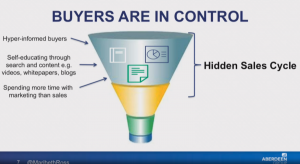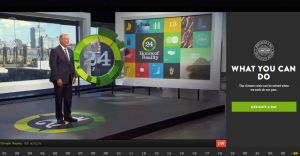
From its humble beginnings with a single podcast, TWiT.tv is now poised to become “the CNBC of tech” — powered by its partnership with Ustream.
Since 2005, the shows of TWiT.tv have provided news, commentary, help, how-to and perspective on the latest trends in digital tech from seasoned experts and journalists. Beginning with a single podcast called This Week in Tech (the source of the acronym TWiT), the online broadcaster now offers more than 20 other top-ranked shows, including This Week In Google, Tech News Today, Green Tech Today, Macbreak Weekly, Windows Weekly, The Daily Giz Wiz and many more.
“Soon after we started the podcast, I could see that video was getting the lion’s share of attention,” recalls Leo Laporte, founder, owner and president of the Internet television channel. “We set up a webcam and started streaming video of me recording the podcast.” But even in 2005, Laporte foresaw a grander future for streaming video.
“I envisioned a time when IPTV [Internet Protocol television] would take off, when people wouldn’t care where they got their TV from traditional networks or Internet broadcasters,” he remarks.
Today, TWiT.tv produces 30 shows and owns a 3,000-square-foot studio in Petaluma, California. Viewers can enjoy the content live as it is broadcast or via download; however, Laporte notes that the live broadcasts are the secret behind TWiT’s special brand of success.
“I came from live TV and radio,” Laporte explains, “so I know firsthand that there’s an immediacy, an urgency, an energy around live broadcasts. Because we’re live, our shows are better — they feel live, even if you’re watching a download.”
Ustream has been a partner of TWiT.tv since its earliest broadcasts. “Ustream is our oldest partner, and it’s the default selection on our live stream home page,” says Laporte. “Our audience is very tech savvy, and they come with the expectation that our broadcast will be flawless. It’s so important that the distinction between Internet broadcasters and ‘real’ broadcasters disappears — we ARE real broadcasters — and Ustream enables us to deliver a real broadcast experience.”
In addition to uncompromising quality, Ustream has also delivered on customer service. “We were very specific about what we wanted,” Laporte notes, “and Ustream has been great about helping us do livestreaming our way. For example, we didn’t want preroll ads — our advertising is a part of the show — and they’ve worked with us every step of the way.”
As livestreaming becomes more popular and accessible to more content creators, Laporte sees his vision for IPTV closer than ever to becoming reality. “Newer televisions are capable of showing IPTV,” he explains. “One day soon, picking up the remote will be the same process for watching network TV as for accessing an Internet show. Then IPTV will be a reality … and TWiT.tv will be right there.”
To learn more, check out the TWiT.tv case study video or download our white paper to learn how you can integrate video into your communication strategy.





